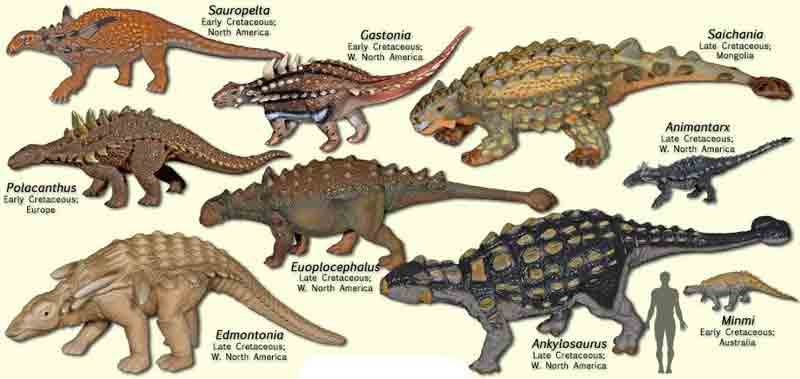Dinosaur Fossil Bone Scute Body Armor section mm 52 x 43 x 8 Armored Ornithopod Ankylosaurus magniventris Quadrupedal Herbivore Extinct Reptiles Mesozoic Cretaceous Collecting Paleontology Museum.
High quality Osteoderm, beautiful collectible fossil specimen that is difficult to find, excellent condition with excellent details, has a pleasant surface texture bone patina, with the furrows of blood capillary still evident.
No restoration at all. Only a piece, as in photos.
Ankylosaurus (Ornithischia, Thyreophora, Ankylosauridae, Ankylosaurinae), whose name from the Greek literally means "molten lizard", is an extinct genus of herbivorous dinosaur lived in the Upper Cretaceous, about 68-66 million years ago (Maastrichtian), in what today it is North America, which makes it one of the last dinosaurs to appear before the great KT extinction. Ankylosaurus was first described in 1908 by the paleontologist Barnum Brown, and currently the type species, A. magniventris, is the only species ascribed to the genus Ankylosaurus. Since its discovery, only a handful of fragmentary specimens have been found, but a complete skeleton has never been found. Although most members of the Ankylosauria are represented by far more complete fossil materials, Ankylosaurus is often regarded as the archetype of its group.

With a maximum length of 6 m, a height of almost 2 m and a weight of 6 tonnes, despite the scarce fossil material, Ankylosaurus is still today considered the largest genus of Ankylosauria. Its broad and robust body was supported by four short but strong legs, and was covered with a thick armor of knobs and bone plates known as osteoderms or shields, embedded in its skin and arranged in rings that also surrounded the region of the neck. These structures have never been found in their original position, so their exact location on the body is unknown, although conjectures can be made based on related animals, for which various assemblies have been proposed. Osteoderms ranged from 1 to 35 centimeters in length and had different shapes. Those of the Ankylosaurus were generally thin-walled and dug at the bottom. Small osteoderms and ossicles probably occupied the space between the larger ones to allow movement. The osteoderms that covered the body were very flat, unlike the Euoplocephalus or the nodosauride Edmontonia. Also other ankylosaurs often have many smaller osteoderms that surround the larger ones. Because of its imposing armor, the Ankylosaurus should not be a very fast animal, so it is thought to be a slow animal, able to make rapid and snappy movements only when needed.
His broad, low head had two small horns branching backwards and another pair of the same shape but pointing downwards. The front of the jaws were covered in a horny beak, with a row of small, leaf-shaped teeth. The bones of the skull were fused, which gave greater resistance to the bones, this characteristic also gives the name to the genus.
His wide and flattened snout indicates that it was an herbivorous, not very selective, able to chew and rip any type of vegetable. The sinuses and nasal cavities were exceptionally developed, indicating a highly developed sense of smell, as well as making paleontologists believe that the animal could emit various types of vocalization.
His long armored tail ended in a large 60 cm long club made up of fused osteoderms, similar to that of Euoplocephalus and Scolosaurus, but different from the pointed bat of Anodontosaurus or the narrow and elongated Dyoplosaurus club. The Ankylosaurus caudal mace was an excellent offensive weapon, able to produce an impact strong enough to break the bones of a possible aggressor: violently pushing the caudal mace would certainly have broken the metatarsal of large theropods like Tyrannosaurus. It is likely that it was also used in intraspecific fights.
The fossils of this animal have been found in the Hell Creek, Lance and Scollard formations, but in all areas it seems to have been a rather rare animal in its habitat. Although he lived next to another anchilosauride, Edmontonia, it seems that the two animals have never entered competition, as they occupied different ecological niches, in fact, the anchylosaur seems to have inhabited the most mountainous areas. The Ankylosaurus shared its habitat with other dinosaurs that included the ceratopsides Triceratops and Torosaurus, the parksosauride Thescelosaurus, the hadrosauride Edmontosaurus, the nodosauride Denversaurus, the pachycephalosaurus Pachycephalosaurus, and the theropods Anzu, Struthiomimus, Ornithomimus, Dakotaraptor, Acheroraptor, several troodontides, and Tyrannosaurus.



